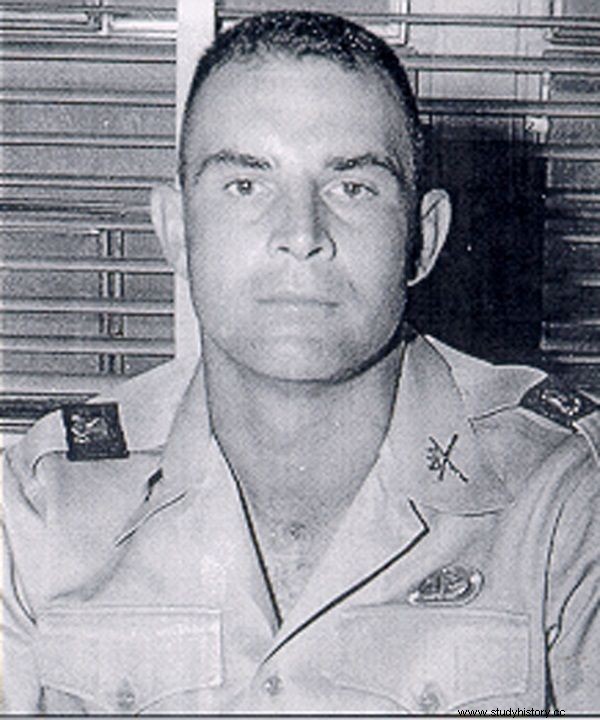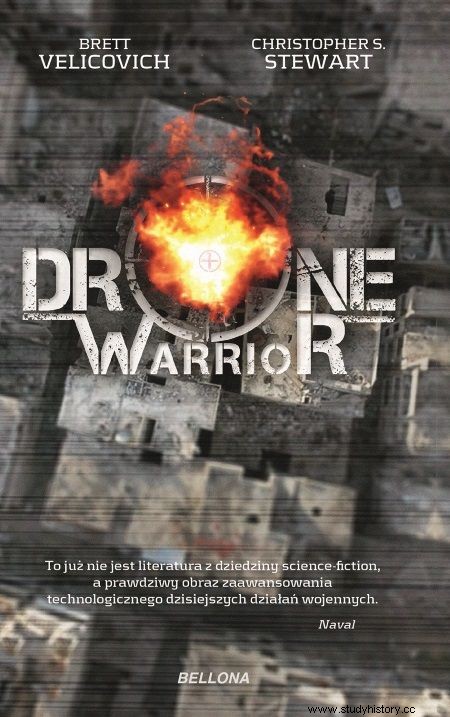There is a unit in the US Army that cannot be joined. It is its representatives who search for the best of the best in all armed forces, so that they become part of a super-secret unit, whose most important task is to ruthlessly fight terrorists.
In the 1970s, the world was flooded with terrorism on a much larger scale than today. People were killed in attacks organized by the IRA, Fatah, the Red Brigades and other organizations that considered brutal methods of fighting for their cause the only appropriate. People over the ocean also could not feel safe, especially when fundamentalist terrorism appeared in the next decade.
There was no specialized unit in America that could combat this threat. Colonel Charles Beckwith, who commanded a group of commandos in Vietnam, strove for her appointment. It was thanks to his efforts that on November 21, 1977, the 1st Special Forces Operational Detachment-Delta (1st SFOD-D) was created, i.e. the Operational Branch of the Special Forces of the United States Army, called the Delta Force.
The unit cannot be accessed by walking. It is also not possible to report to her. It is Delta's selectors who search for candidates from among the soldiers of special units of the American army. When they invite a recruit to a base isolated from the world, they know everything about him, their biography, connections, achievements, and the level of his knowledge.
For Delta to get interested in a soldier, it is not enough for him to be a great commando. It is also important to have unique skills - when speaking in a rare language, whether he is a specialist in electronic security. When a recruit receives an honorable mention from 1st SFOD-D, it is just the beginning of the ordeal. It's time for a selection.

Charles Beckwith as a young soldier. Nobody could have expected that in the future it would lead to the creation of one of the best special forces in the world. (photo:public domain)
Can anyone's feet fall off during a selection?
One method of screening out applicants for Delta Force is an extreme test of their strength and physical endurance. In addition to push-ups, runs, sit-ups and swimming, it is also checked whether future operators are able to march almost marathon distances with a load. Eric Haney, author of the book "Delta Force", who was one of the first groups of recruits from the 1970s, passed such a test.
During the selection, the candidates walked 28 kilometers with a backpack weighing 18 kilograms and, additionally, with water flasks. In order to survive this journey, the recruits had to be of a truly iron condition. One of them did not take care of her, which he bitterly regretted. The old corns on his feet grew new, huge blisters. After a strenuous and long walk, the view was not very pleasant. Years later Heney noted:
From the toes to the heel, his feet were completely skinless. It was as if some old Indian warrior with a twisted sense of humor had scalped him from below, instead of from above. […] Joe McAdams soon became legendary among soldiers as the Man Who Flew His Feet On The Selection March For The Delta Force. Everyone knew the legend […].

However, the 28-kilometer "walk" was just an appetizer before the real ordeal. Later, for many days, the recruits marched through the mountains, forests and wilderness with heavy backpacks, to march with a 22.5 kg backpack 60 kilometers on the last day, which took nearly 20 hours with several minutes breaks. By the end of their trek, the candidates were almost exhausted to the point of loss of consciousness. Many of them moved forward only by willpower, and when they reached the finish line, the instructors had to drag them to the trucks like sacks of potatoes.
Like a job interview lasting many days
In 2007, another commando, Brett Velicovich, author of the book "Drone Warrior", began selecting for the Delta, which is usually completed by about 10 out of 150 candidates. Much has changed since Haney's time. The unit needed specialized recruits, and Brett Velicovich had long served as an intelligence analyst. As he describes in his memoirs: From the very beginning until the end of the training, the instructors played a lot with our heads.
His selection differed from that which was customary for people who were to become operators. He compares it to a job interview lasting many days, in which stress is at its maximum. On all sides, a person is under pressure psychologically, emotionally and forced to exhausting mental effort. In addition, continuous intelligence tests, psychological tests, tasks testing the ability to deal with stress, and continuous observation and assessment.

Delta operators disguised as Afghan civilians (photo:public domain)
Only the mentally strongest people could survive this process. There was only one thing - you could resign at any time. Velicovich, however, survived all tests and became a member of the Delta Force. Unfortunately, we will not learn much more about the recruitment process because it is all secret. Much information was even deleted from the Drone Warrior manuscript at the behest of the US authorities.
Selection and training at 1st SFOD-D is to prepare recruits for action in all conditions. Delta Force is most often used for direct actions, including rescuing hostages, breaking terrorist cells, and eliminating important targets. Regardless of the tasks performed on a daily basis, each member of the squad undergoes murderous training. Both the dentist, the cook and the intelligence analyst sitting in the windowless room are able to take up arms and, if necessary, repel an enemy attack. They are trained to drive an armored car or to shoot with absolutely any weapon available under the sun, including rocket launchers. Delta soldiers are also trained in pyrotechnics, personal protection and hostage rescue.
Get the terrorist
The most important, however, are the operators who enter the room together with the door, ready for any eventuality. They were excellent soldiers in their earlier units, but after undergoing training in the Delta, they become true killing machines, equipped with the best equipment. This is the only unit of the US Army that takes on missions weapons and gadgets that are only in the testing phase and checks their effectiveness in the field. As the author of "Drone Wariora" commented:
I learned very quickly that Delta's tasks were not very complicated. I could put it in one sentence - hunting the most dangerous terrorists in the world.

During Operation Desert Shield in 1990, Delta operators protected General Norman Schwarzkopf, the commander of the coalition forces (photo:public domain)
What was the role of Velicovich in all this? After training, he became one of two intelligence specialists admitted to Delta this year. In the end, he was the only one - the second recruit was sent home after a few months of service. When he entered the building, he became the eyes of the commandos. It was Delta's interview that found and pointed out targets to the operators and assisted them by observing missions with the drone's camera.
We will never hear about the vast majority of these operations - they are super secret. It is known, however, that in 2001, during the invasion of Afghanistan, the task of Delta operators was to capture and eliminate the most important targets (Taliban leaders and al-Qaeda members) and to cooperate with intelligence. They were the first special forces to be in place in the early months of the war. During Operation Tora Bora, they provided support to the CIA and the Green Berets. They conducted field reconnaissance prior to Operation Anaconda, the first major battle against Taliban forces.
Delta operators also took part in the invasion of Iraq, where they managed, among other things, to capture the fourth most important man in the state (Saddam Hussein's personal secretary) and find the hiding two sons and grandson of Saddam, who, however, died during the assault. In 2004, Delta performed up to 18 operations per month. In the following years of the war on terror, 1st SFOD-D sent the command wherever it was necessary to carry out the most dangerous missions, knowing that the operators of this unit had the best chance of success.
Information sources:
- "Komandos" No. 9 (2004), No. 1 (2005).
- Haney E., Delta Force , Wydawnictwo Inne Spacery 2010.
- Velicovich B., Drone Warior , Bellona 2018.
Buy the book at a discount on empik.com

